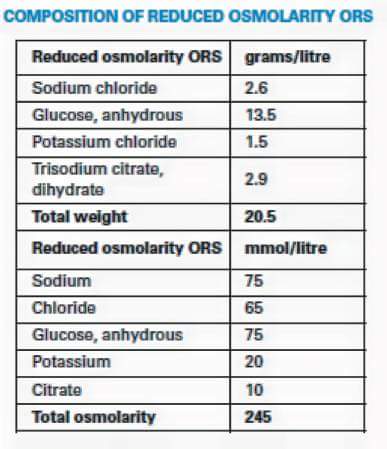Endocrine (Last Minute Revision)
1. diagnosis of diabetes mellitus Fasting BG>125 mg and post prandial >140mg, HbA1 >6.5%
2. Diabetes control is best monitored by: HbA1C
3. GLP-1 agonist, Exenatide
4. Insulin resistant if he needs more than – 200
5. Seen in DKA, Dehydration, Abdominal pain/tenderness
6. in DKA, Leukocytosis, Pseudohyponatremia occurs, Acute gastric dilatation
7. most dangerous complication of DKA, Cerebral edema
8. plasma of osmolality, 290
9. Deficiency of which of the following vitamins can lead to lactic acidosis , B1
10. The most reliable indicator for diabetic nephropathy is , Urine albumin >30 mg per day in 3 consecutive samples
11. Earliest feature of diabetic nephropathy, Raise GFR
12. Third nerve palsy with normal pupillary reaction, Diabetes
13. Drug used for DM gastropathy , Erythromycin
14. Drug is not used in erectile dysfunction, Apomorphine, Yohimbine, PgE1
15. Life threatening complications of diabetes mellitus are, Malignant otitis externa, Rhinocerebral mucormycosis, Emphysematous pyelonephritis
16. Weight loss may be seen in, Uremia, Pheochromocytoma , Adrenal insufficiency
17. parameter for Metabolic Syndrome (Syndrome X), Hypertriglyceridemia, Low HDL cholesterol, Hypertension
18. Hyperthyroidism following administration of supplemental iodine to subjects with endemic iodine deficiency goiter is known, Jod-Basedow effect
19. best marker to diagnose hypothyroid is, TSH
20. Decreased Radio iodine uptake is, Subacute thyroiditis , Factitious thyroiditis
21. ischemic heart disease [IHD] is diagnosed having hypothyroidism. Which of the following would be most appropriate line of management for, Start Levothyroxine at low dose
22. true about Hashimoto’s thyroiditis, Follicular destruction , Increase in lymphocytes, Oncocytic metaplasia , Orphan Annie eye nuclei
23. 'Hurthle cells' are seen, Hashimoto's Thyroiditis
24. feature of dequervan's disease, ESR, Painful & associated with enlargements of thyroid
25. common cause of hyperparathyroidism, Parathyroid adenoma
26. presentation of hyperparathyroidism is, Asymptomatic hypercalcemia
27. feature of hypercalcemia, Polyuria, Vomiting, Depression
28. Tufting of the terminal phalanges is seen in, Hyperparathyroidism
29. causes of hypercalcemia, Lithium therapy, Multiple myeloma, Vitamin A intoxication
30. true, Williams syndrome consists of precocious puberty, mental retardation & obesity
31. Hypercalcemia is seen in all, Sarcoidosis, Vitamin A toxicity, Phenytoin toxicity
32. Hypercalcemia is, Prolong immobilization,
33. Pseudohypoparathyroidism, ed PTH
34. Features of tumor lysis syndrome, Hyperuricemia, Hyperphosphatemia, Hyperkalemia
35. tumor lysis syndrome are, Hypocalcemia
36. Hypophosphatemia is seen in, Resolving phases of diabetic ketoacidosis, Respiratory alkalosis, Chronic alcoholism
37. Type I MEN involves, Pancreas, Pituitary, Parathyroid
38. associated with MEN 2, Pheochromocytoma, Medullary carcinoma thyroid, Parathyroid adenoma
39. features of MEN II b, Pheochromocytoma, Neuromas, Medullary ca thyroid
40. most common cause of Cushing's syndrome, Iatrogenic steroids
41. features of Cushing's disease, Central obesity, Easy bruising , Glucose intolerance
42. Cushing's disease is associated with, Increased ACTH and increased cortisol
43. earliest manifestation of Cushing's syndrome, Loss of diurnal variation
44. Conn's syndrome is most commonly associated with, Cortical adenoma
45. Conn's syndrome is associated with, Hypertension, Muscle weakness, Hypokalemia
46. cause pituitary apoplexy, Diabetes mellitus, Sickle cell anemia, Hypertension
47. Octreotide is useful for, Insulinoma, Glucagonoma, Carcinoid tumor
48. brain tumors spreads via CSF, Medulloblastoma
49. Heal pad thickness is increase in, Acromegaly
50. Commonest cause of increase heal pad thickness, Trauma
51. Hypoglycemia is seen in, Hepatoma
52. Hypercalcemia occur in, Breast, Bladder, Head & Neck
53. SIADH occur in, Small cell lung cancer
54. To diagnose a case of diabetes, the fasting blood sugar should be, 126
55. Type 1 diabetes is associated with, DR4
56. hyperglycemia occurs, Cushing syndrome
57. Hypoglycemia is a important feature, Addison disease
58. DPP IV inhibitor, Sitagliptin
59. Drug which can be used in both type I and type II diabetes, Acarbose
60. DKA case is treated with insulin the serum sodium level, Rise
61. Most common type of diabetic neuropathy, Sensory neuropathy
62. condition can lead to hypothyroid, Hemochromatosis
63. drug can lead to hypothyroid, Lithium
64. condition can lead hypothyroid, Scleroderma
65. Non pitting edema, Hypothyroid
66. Hung up reflex is seen, Hypothyroid
67. Which of the following is most common seen in hypothyroid, Raised LDL
68. Cyst in the bones are seen in, Hyperparathyroid
69. Edema feet is not a feature, Conn syndrome
70. Triad of pheochromocytoma includes, Palpitation, Headache, Sweating
71. Profuse sweating is a feature, Pheochromocytoma
72. Desmopressin is used in the treatment, Cranial diabetic insipidus
73. Hyponatremia occurs in which of, Small cell lung carcinoma
